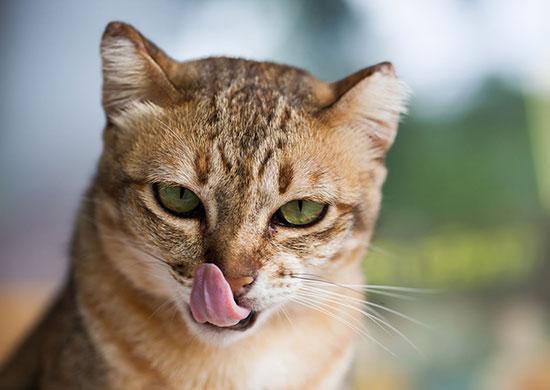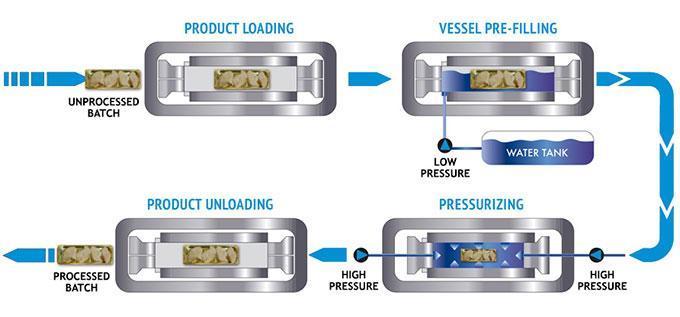This content is archived from the Feline Nutrition Foundation
High Pressure Processing: The Future of Raw Cat Food?
- Updated: Sunday, June 02, 2019 02:40 PM
- Published: Saturday, November 07, 2015 11:57 AM
- Written by Elisa Katz, DVM
 The FDA has long had a problem with raw pet foods, citing them as unsafe due to the potential for bacterial contamination. As a result of FDA attempts to interfere with the raw pet food industry, many raw cat food manufacturers have begun using HPP or High Pressure Processing to sterilize their foods without cooking them, to the benefit of proper cat nutrition.¹
The FDA has long had a problem with raw pet foods, citing them as unsafe due to the potential for bacterial contamination. As a result of FDA attempts to interfere with the raw pet food industry, many raw cat food manufacturers have begun using HPP or High Pressure Processing to sterilize their foods without cooking them, to the benefit of proper cat nutrition.¹
HPP is exactly what it sounds like. It is a process by which a food is subjected to high pressure, typically between 100 MPa up to 1,000 MPa for a certain period of time in order to kill bacteria and hopefully not damage nutrients much, if at all.² It has been known that high pressure can kill bacteria since 1895. Shortly thereafter, it was discovered that HPP treated milk stayed fresh longer. Use of HPP has been growing, despite the high costs of the equipment needed. HPP is currently used for many products for human consumption including: deli meats, juices, jams and jellies, milk and packaged greens, fruits and vegetables and many other products. Many food companies such as Kraft, Tyson, Foster Farms, and Hormel use it not only to kill bacteria, but also to extend the shelf life of the product. It is likely that you have eaten many foods that have been processed in this way, without even being aware of it.
So, what exactly is occurring during HPP? High pressure can inactivate and kill bacteria. This is one of the main benefits of this process. Very little damage to proteins, depending on the pressure, occurs during HPP. At pressures above 400 MPa, a small amount of protein damage in meat is suspected as there occurs a lightening of the meat's color. For the most part, however, HPP does not appreciably alter the nutrient content of raw foods.³ This is in contrast to cooking, which can radically alter the nutrient content of meats. While HPP effectively kills bacteria, it is still being determined whether it is effective on viruses.⁴ HPP used under certain circumstances may kill prions, such as BSE or Bovine spongiform encephalopathy, but using it for this purpose may not be practical.⁵

Before the HPP process begins, the food must be packaged into a container which is expandable and contractible. This is because pressure causes the food material to condense. Once the pressure is released, the food will then expand. As shown in the figure below, in order to achieve evenly distributed pressure, a fluid-filled vessel is used. Most often, the fluid used is water. The packaged food is placed into the vessel and the system is completely sealed. Water is then pumped in until the desired pressure is achieved. For most meats, this is somewhere between 200-500 MPa. This is equivalent to about 29,000 to 72,500 psi or about 2000 to 4900 atmospheres. The product is typically held at this pressure for 15-20 minutes. Once the vessel is emptied and the pressure is released, the product may be kept in its original packaging or may be repackaged.
HPP is considered to be an extremely effective and safe way to greatly decrease the amount of viable bacteria in foods. Not all raw pet foods use HPP, but some brands that do are Nature's Variety, Bravo, Primal for their poultry items, Northwest Naturals and Stella & Chewy's. HPP equipment can be very expensive and using the process can slow production time. Therefore, it can appreciably increase the cost of feeding raw cat food. However, this method may be the way of the future for commercial raw pet food companies, if they want to avoid the wrath of the FDA.
Dr. Elisa Katz, DVM, is a graduate of Ohio State University and is the owner of Natural Pet Animal Hospital in Bourbonnais, Illinois. She practices holistic and integrative medicine focusing on proper diet and nutrition. Dr. Katz shares her home with four kitties and one dog.
1. S Thixton, "FDA is Testing Raw Pet Food, And Only Raw Pet Food," Truth About Pet Food, June 2, 2015.
2. Shankar Ravi, "High Pressure Processing-Changes in Quality Characteristic of Various Food Material Processed Under High Pressure Technology" International Journal of Innovation and Scientific Research 3, June 2014, no. 2, 168-186.
3. Kadam, et al, "Review on the High Pressure Technology (HPT) for Food Preservation," Journal of Food Processing and Technology3, no. 1, Dec 3, 2011.
4. DH Kingsley, "High Pressure Processing and its Application to the Challenge of Virus-Contaminated Foods," Food and Environmental Virology 5, March 2013, no. 1, 1-12.
5. P Brown, R Meyer, F Cardone and M Pocchiari, "Ultra-high-pressure Inactivation of Prion Infectivity in Processed Meat: A Practical Method to Prevent Human Infection," Proceedings of the National Academy of Sciences 100, March 2003, no. 10, 6093-6097.




